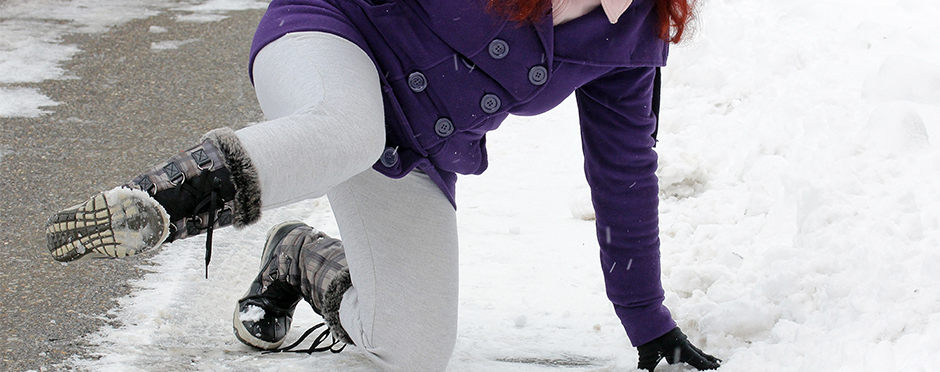
Winter Falls and Distal Radius Fractures
1 CommentWhen it’s cold and slippery, many of us struggle with keeping our balance and maintaining an upright position. When this happens, we often fall onto our outstretched hand, which can result in serious injury.
Falling and Wrist Fractures
The wrist is made up of two bones in the lower arm, the radius and ulna, plus the small bones of the hand. The most common wrist fracture, known as the distal radius fracture, often occurs when a person extends an arm to break their fall. The hand and forearm take all the weight and force from the fall, and one of the wrist bones sometimes break.1
Distal radius fractures are a common injury and account for one-sixth of all fractures seen and treated in emergency rooms. Snow and ice can be major contributing factors to the incidence of distal radius fractures seen in the winter months.2
Following a fall, you may be bruised and sore. Sometimes, a fracture may go undiagnosed with the pain, limited movement and weak hand grasp in the affected arm left being attributed to a bad sprain (an injury to the ligaments). Some signs that may suggest your wrist is fractured rather than sprained include:
- persistent pain
- swelling near the wrist
- changes in finger movement
- numbness
Treatment Options for Distal Radius Fracture
After a diagnosis of distal radius fracture, surgery may be required to place the bones back in proper alignment. This could include using metal plates or pins to secure the position of the radius. When this happens, patients may be splinted or casted for a period of time following surgery.
Depending on the severity of the fracture and the type of fixation, patients may be allowed to move their wrist within two weeks of surgery. Oftentimes the patient’s treatment plan will include hand therapy to expedite recovery.
There are many benefits to hand therapy in the recovery process including pain reduction, management of swelling, restoration of range of motion and recovery of functional strength. Treatments are always tailored to the patient’s individual needs and goals, with sport-specific or job-specific factors used to guide therapists in the development of a comprehensive recovery plan. If you are diagnosed with a distal radius fracture, click the button below to find a nearby Athletico’s occupational therapist that can help you in the recovery process.
The Athletico blog is an educational resource written by Athletico employees. Athletico bloggers are licensed professionals who abide by the code of ethics outlined by their respective professional associations. The content published in blog posts represents the opinion of the individual author based on their expertise and experience. The content provided in this blog is for informational purposes only, does not constitute medical advice and should not be relied on for making personal health decisions.
References:
1. “Wrist Fractures.”American Society for Surgery of the Hand. N.p., n.d. Web. 30 Jan. 2017.
2. “Distal Radius Fractures.” (n.d.): n. pag.Alpha Hand Surgery Centre. Web. <http://alphahandcentre.com/wp-content/uploads/2014/08/Distal-Radius-Fracture-.pdf>.


1 Comment
Stelpner
How about telling us how to prevent the falls in the first place. What are some good strategies for walking on ice and snow. Which muscles to be built up